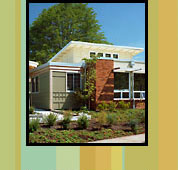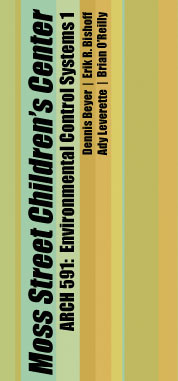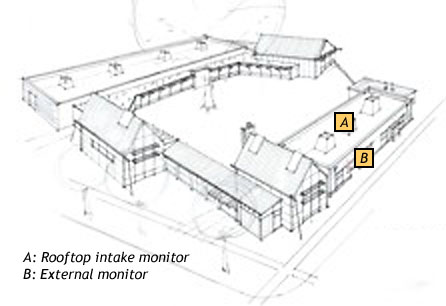

| Methodology | |||||||||||||
|
Suppose the outdoor air is 50°F and the indoor is 70°F. A temperature differential of 20°F exists. If the heat recovery unit is supplying air at 65°F, it is making up 15°F of this 20°F difference, and is operating at 75% efficiency. This same principle can be applied to enthalpy (although the math is more difficult and requires the use of the psychrometric chart). Therefore, the formula for enthalpy efficiency can be stated as:
We measured the dry bulb temperature and relative humidity at four points: exterior air near the building, exterior air at point of intake into the heat recovery unit, supply air at diffuser, and interior air near human level. The exterior air (near the building) data point was included as a reference; it was not used in the calculation.
HOBO U12 2-Channel Data Collectors were programmed to sample dry bulb temperature and relative humidity at 15 minute intervals. We collected data for four days during the initial test period and two days for the subsequent test.
|
|||||||||||||
HOME | ABSTRACT | INTRODUCTION | HYPOTHESIS | METHODOLOGY | RESULTS | SUMMARY | REFERENCES"The Answer is Blowing in the Wind"A study of the Moss Street Childrens Center ARCH 591 Final Project University of Oregon For information please contact: Dennis Beyer [ dbeyer1(at)uoregon.edu ] Erik R. Bishoff [ ebishoff(at)uoregon.edu] Ady Leverette [ aleveret(at)uoregon.edu ] Brian O'Reilly [ boreilly(at)uoregon.edu] |
|||||||||||||

